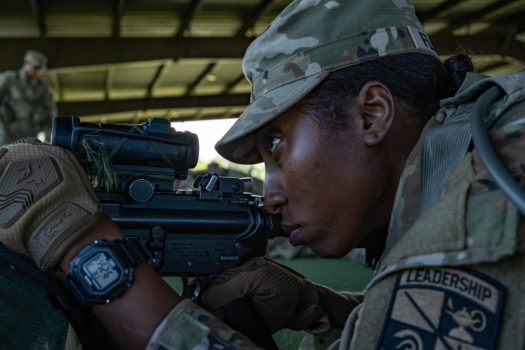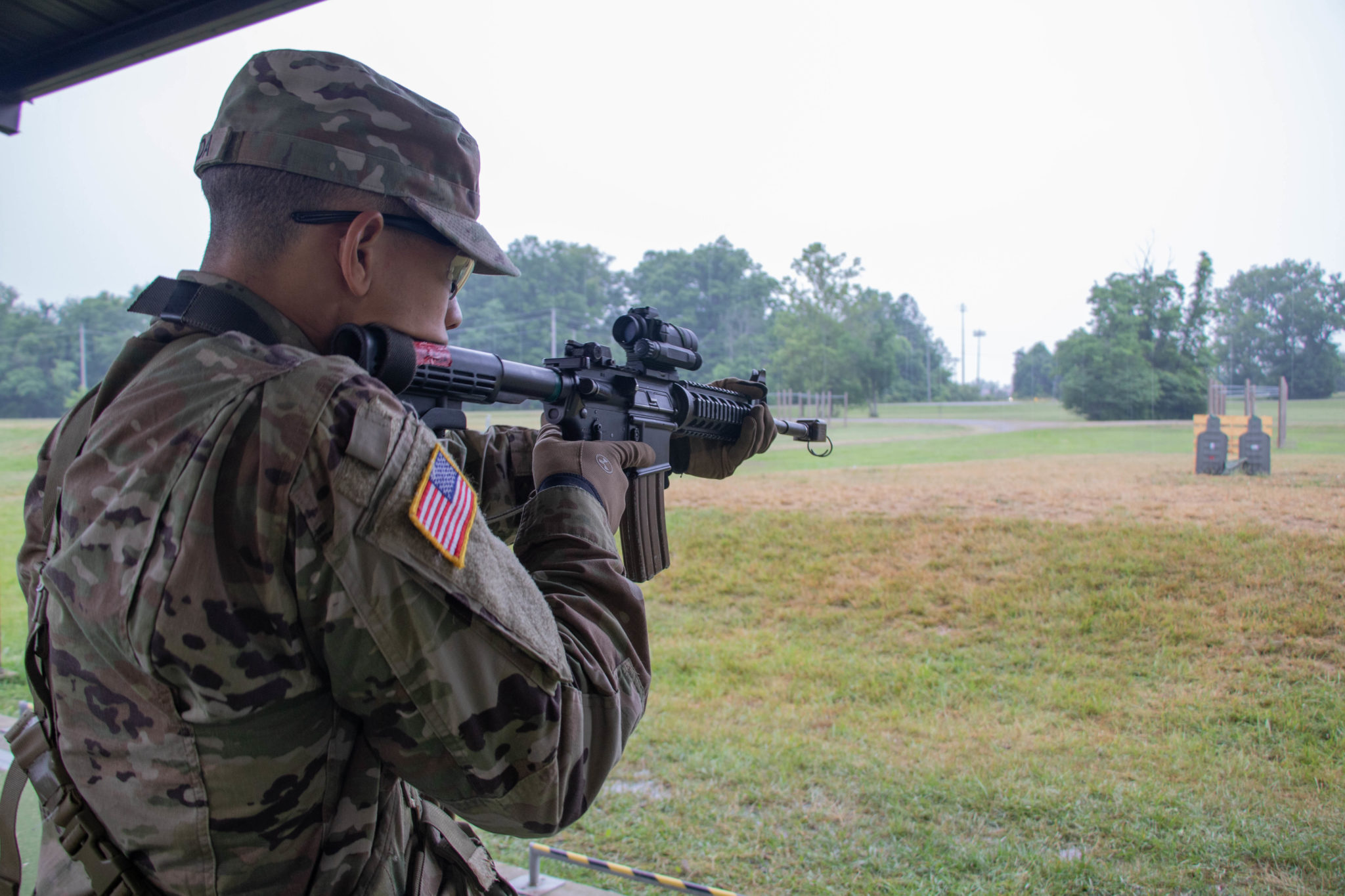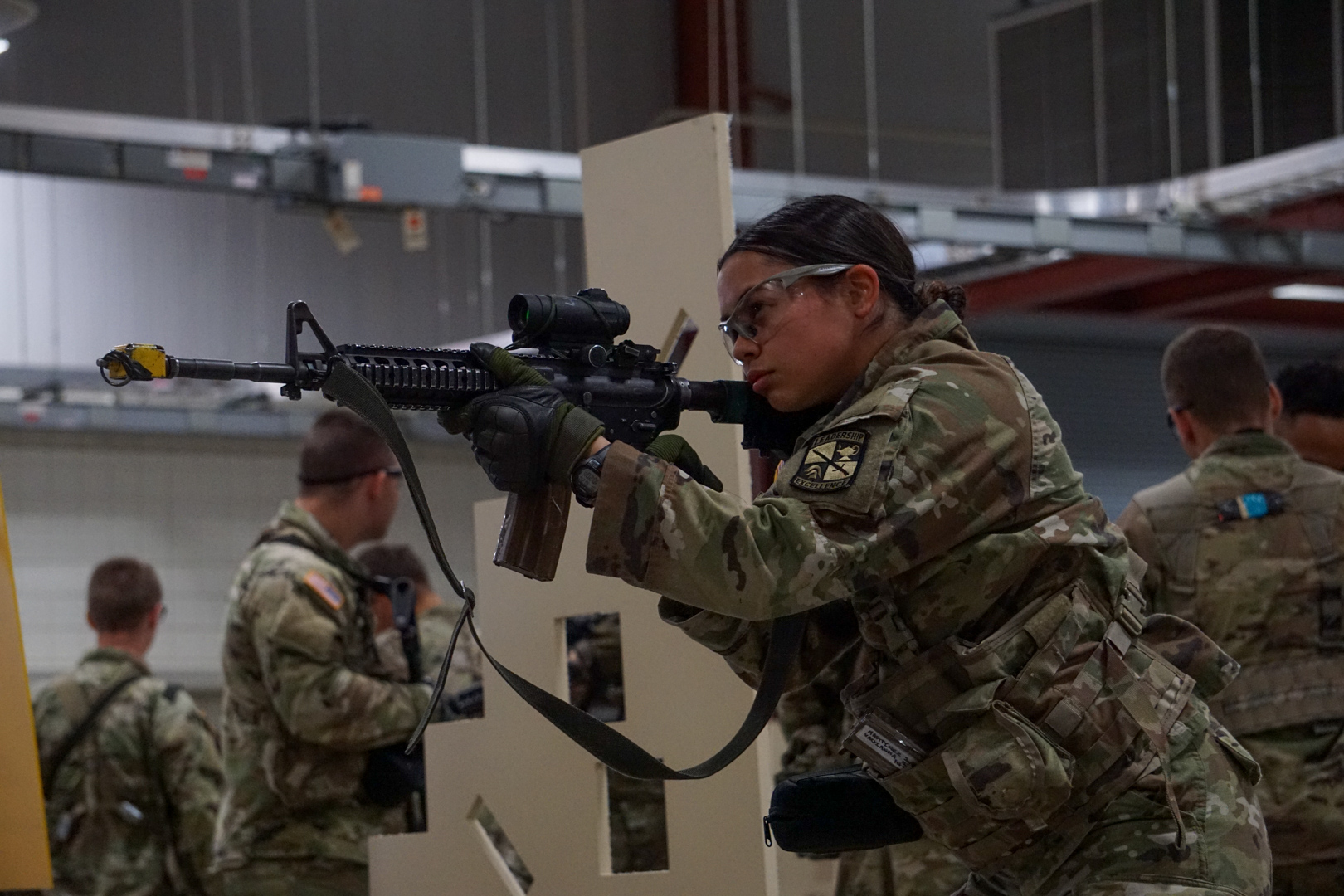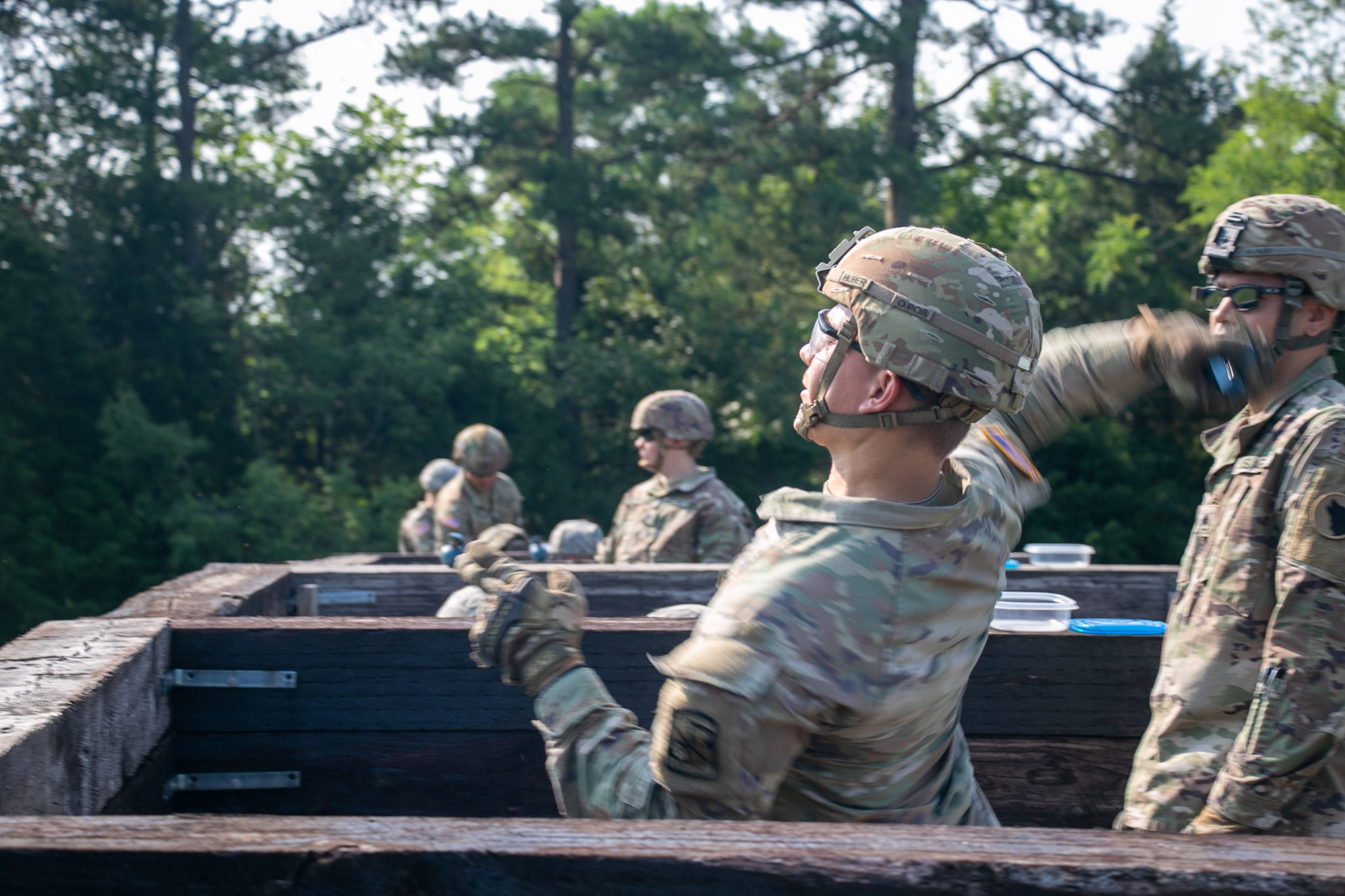When Cadets arrive to Cadet Summer Training (CST) at Fort Knox, Ky., many undergo a rapid learning curve on their path to become effective leaders for the U.S. Army.
“I fumbled a lot on Land Navigation and my platoon really rallied around me,” said Paulakae Gordon. “There was not one person that wasn’t taking the time to teach me on things that I needed to know.”
Nobody is truly alone with their struggles at CST, as teams work together to overcome the obstacles they face. Gordon encountered an uphill battle at land navigation, but the support of her teammates helped push her forward.
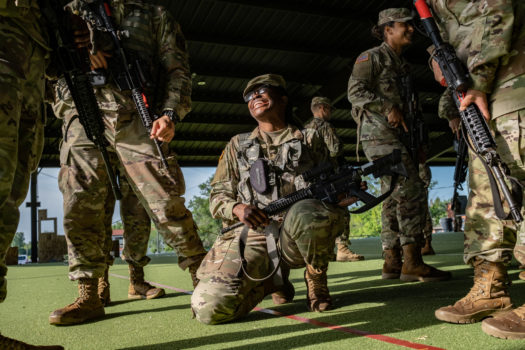
On June 3, Gordon had the opportunity to return the favor at P.M.I [preliminary marksmanship instruction].
“It felt really good for my mental (health) to be able to give back to my community and to help them on their stuff…it’s nice to be able to return that favor,” she said.
Gordon and the rest of her regiment were taking the first steps in preparation for live fire training by learning the firing basics of their issued M4-A1 carbines.
“We’re learning weapons familiarization (and) weapons techniques,” said Ashley Canady-Fleurant, Florida International University.
They were also instructed on different firing positions, such as prone supported and unsupported, as well as using aggressive stance transitioning.
“Everyone needs to know how to do this whether you’re an officer (or not). Whoever you are, you never know when you are downrange and you might take contact,” said Gordon. “(Cadets) are more book wise, we are not very hands on…its (important) for us to get comfortable with holding a weapon and knowing how to use it.”
Both Cadets recognize that becoming better marksmen will ensure they are effective in their roles as officers for the U.S. Army.
“Being a soldier; boots on the ground … keeping America safe is what we do,” said Canady-Fleurant.
